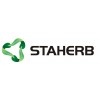Business Type:Manufacturer
Country/Region:China
Ddu Verified
HOT Rank


Changsha Staherb Natural Ingredients Co Ltd
Changsha Staherb Natural Ingredients Co., Ltd., a good supplier of professional herb extracts, especially those with high purity and standardized production process. Our company devotes to supply high quality products and services to customers in R&D and production fields of health products, cosmetics, feed additives and biopesticides.
With cordial and professional R&D, sales and after-sales service groups, Staherb has potent capabilities both in R&D and production. The company persists in high investment on R&D of active ingredients of plants and promotes innovation on demands of customers. Upon constant R&D and tracing of new technologies and new products, Staherb makes effective cooperation with famous research institutes, such as CAS Kunming Institute of Botany, State Key Lab of Hunan Forest Products and Chemical Engineering, Hunan Agricultural University and so on.
Business Type:Manufacturer
Country/Region:China
Ddu Verified
HOT Rank

Zeaxanthin
Chemistry
Product name : Zeaxanthin
Name :Zeaxanthin
EINECS :205-636-4
CAS No. :144-68-3
Density: 1.008 g/cm3
Solubility: insoluble in water
Melting Point :203-205 °C
Formula :C40H56O2
Boiling Point :711.4 °C at 760 mmHg
Molecular Weight :568.87
Flash Point :273.4 °C
Appearance: yellow crystalline solid
Synonyms :all-trans-Anchovyxanthin;all-trans-Zeaxanthin;Zeaxanthin(7CI);b-Carotene-3,3-diol, (3R,3R)-all-trans- (6CI,8CI);(3R,3R)-Zeaxanthin;Anchovyxanthin;Anchovyxanthin, all-trans-;Xanthophyll 3;ZeaGold;Zeaxanthin,all-trans-;Zeaxanthol;
Molecular Structure:
Storage temp: -20°C
Carotenoids;Intermediates & Fine Chemicals;Pharmaceuticals
Uses
Zeaxanthin (CAS NO.144-68-3) is used as a food additive, zeaxanthin is a food dye with E number E161h.
Safety Profile
F: 3-8-10
Specification
Natural occurrence of Zeaxanthin (CAS NO.144-68-3):
Zeaxanthin is one of the most common carotenoid alcohols found in nature. It is the pigment that gives paprika (made from bell peppers), corn, saffron, and many other plants their characteristic color and Zeaxanthin breaks down to form picrocrocin and safranal, which are responsible for the taste and aroma of saffron.